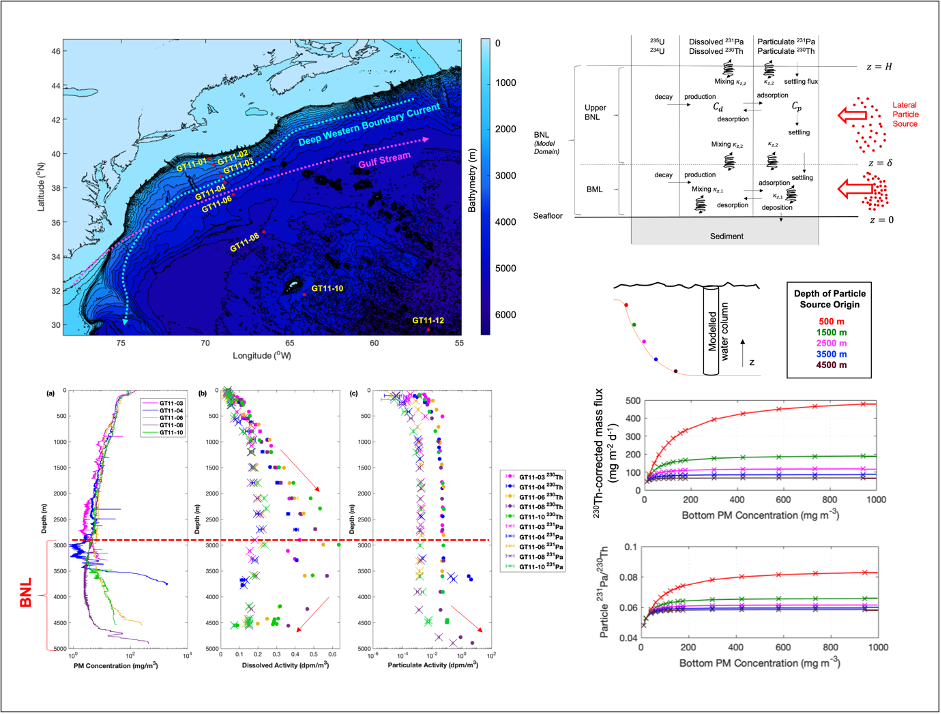Intense benthic nepheloid layers in the Northwest Atlantic Ocean lead to unexpected distributions of dissolved and particulate thorium-230 and protactinium-231
Chen and colleagues (2021, see reference below) explore the behaviour of thorium-230 (230Th) and protactinium-231 (231Pa) in the benthic nepheloid layers (BNLs) by using (i) hydrographic, optical, and radionuclide data from the western segment of GA03 (between Bermuda and the US coast) and (ii) a simplified model of particle and radionuclide cycling that accounts for lateral particle sources. This exhaustive exploration leads to the following results:
- At all the deep stations, BNLs of thickness varying from 482 m to 1358 m were observed. The basal layer of these BNLs fits well with the bottom mixed layer (BML, with maximum suspended particle concentrations reaching 2200 µg/l) whilst these concentrations decrease with height above the BML.
- Fitting the model to particulate matter, 230Th and 231Pa data reveals that the second-order rate constant of adsorption and the first-order rate constant of desorption are lower for both tracers in the BNL than in other oceanic environments.
- At two deep stations located on the continental rise (GT11-04) and on the abyssal plain (GT11-08), and at heights less than about 300 m above the seafloor, the dissolved phase is governed primarily by sorption reactions, whilst the particulate phase behaves more as a non-reactive tracer supplied by the lateral particle source.
- The 230Th and 231Pa activities of particles vary significantly with the origin and the strength of particle source, resulting in (i) an overestimate of 230Th-corrected mass flux and (ii) an increase in 231Pa/230Th ratio of particles settling to the seafloor.
Regarding their paleoceanographic applications, these results highlight the potential biases introduced by sediment redistribution in regions near oceanic margins where benthic nepheloid layers may be present, complicating the application of 230Th normalization and the interpretation of sediment 231Pa/230Th records, for deep-ocean cores raised from near continental rises and similar reliefs.

Reference:
Chen, S.-Y. S., Marchal, O., Lerner, P. E., McCorkle, D. C., & Rutgers van der Loeff, M. M. (2021). On the cycling of 231Pa and 230Th in benthic nepheloid layers. Deep Sea Research Part I: Oceanographic Research Papers, 177, 103627. doi: 10.1016/j.dsr.2021.103627
